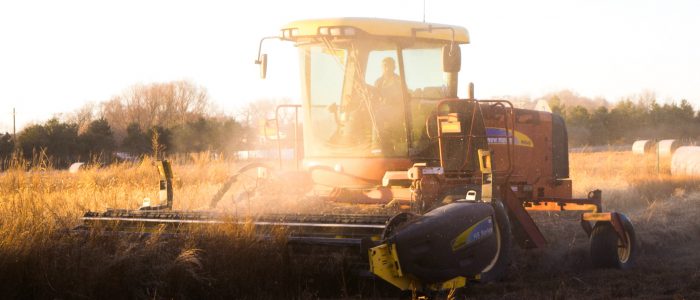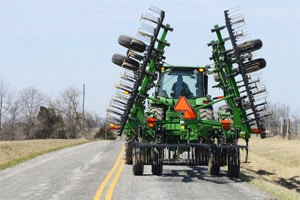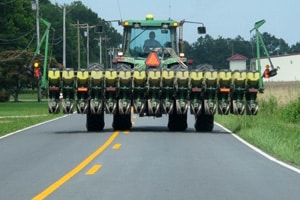APRIL 2022
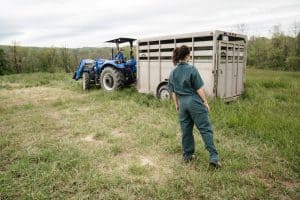 When stepping into spring, it can be easy to be swept up by the rush of planting season. Without proper safety measures, spring tasks like moving farm equipment from one area to the next can be dangerous.
When stepping into spring, it can be easy to be swept up by the rush of planting season. Without proper safety measures, spring tasks like moving farm equipment from one area to the next can be dangerous.
Large farm equipment moving at slower speeds than average travel can result in crashes with passenger vehicles with a heightened risk for injury or death.
Farm vehicle crashes are a major safety concern.The National Highway Traffic Safety Administration reports that 46 percent of all traffic fatalities occur on rural roads.
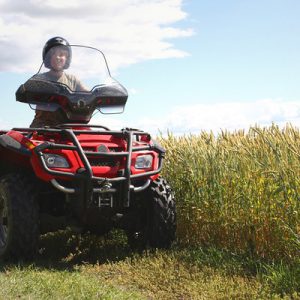 To prevent crashes and promote safety on rural roads, researchers from the U of M, the University of Iowa, and Ohio State University studied the likelihood of farm vehicles being involved in a crash on a public road. This issue is often studied from the perspective of passenger vehicles but usually does not examine how farms or operational characteristics influence the probability of a crash.
To prevent crashes and promote safety on rural roads, researchers from the U of M, the University of Iowa, and Ohio State University studied the likelihood of farm vehicles being involved in a crash on a public road. This issue is often studied from the perspective of passenger vehicles but usually does not examine how farms or operational characteristics influence the probability of a crash.
Case-only studies do not examine how farms, or their operational characteristics influence the probability of a crash
To bridge this gap, the research team surveyed 1,282 farms across the Midwest, asking farmers if their equipment had ever been involved in a crash on a public road. They also asked about factors such as time of the year, size of the farm, horsepower, purpose of the equipment involved, and whether the farm cultivated crops or livestock. Using this data, the team created a predictive model to determine which factors were associated with a history of farm equipment crashes.
- Find out more in the January 2022 Catalyst article by Sophia Koch
The study was funded by the National Institute for Occupational Safety and Health and supported by the Great Plains Center for Agricultural Safety. The authors were researchers from the U of M, the University of Iowa, and Ohio State University.

